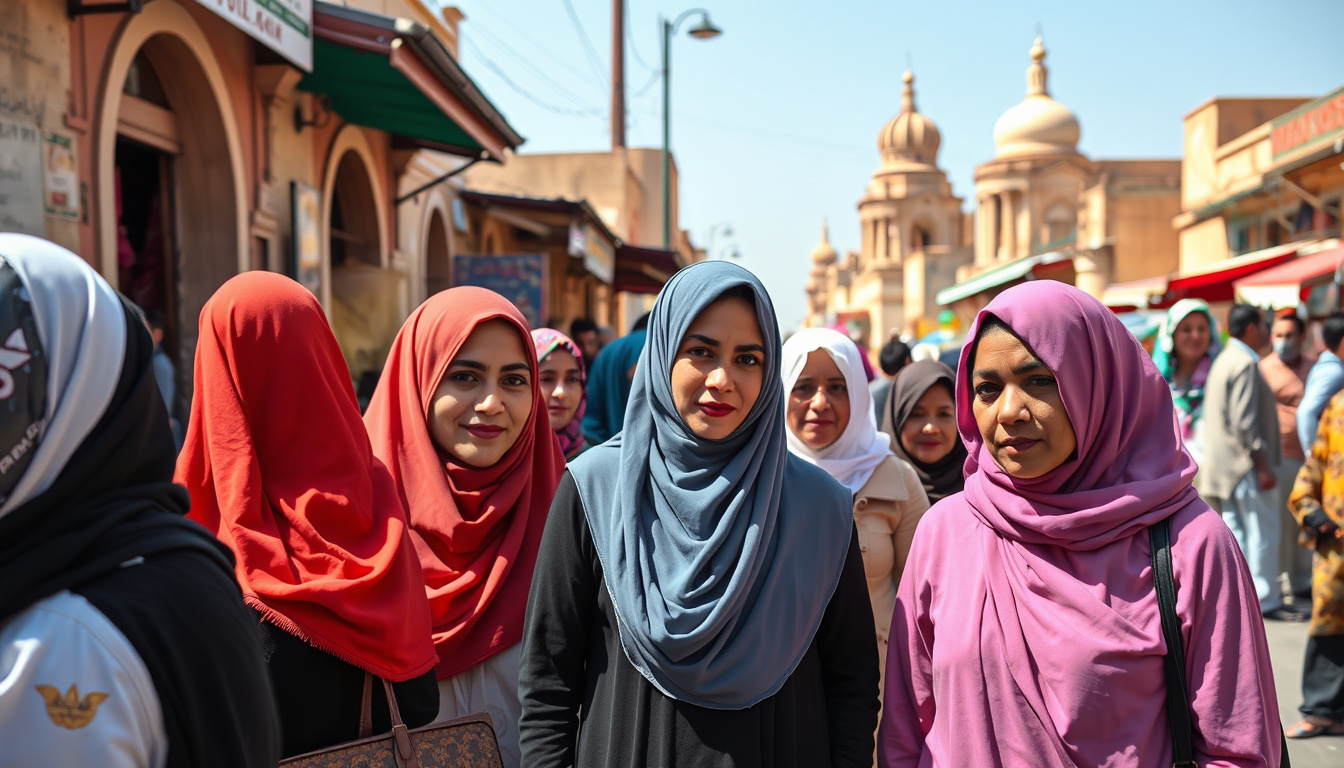In Egypt, the hijab is more than just a piece of fabric; it is a powerful symbol that reflects the intricate intersections of culture, religion, and social identity.
As Muslim women navigate their daily lives, the style of their hijab can significantly influence their social status and acceptance within various public spaces.
This phenomenon has given rise to noticeable disparities among women based on their hijab choices—ranging from traditional, conservative styles to modern, fashionable turbans.
In a society where every aspect of life is often scrutinized through the lens of fashion and class, the hijab can either open doors or create barriers.
This article delves into the stark contrasts among women in Egypt regarding their hijab styles and how these differences affect their interactions in society, illustrated through personal anecdotes and expert insights.

Key Takeaways
- Hijab styles in Egypt significantly influence women’s social status and acceptance in public spaces.
- Non-veiled women and those wearing trendy turbans often experience more privileges compared to those in traditional hijabs.
- Class distinctions related to hijab choices create a divide among women, impacting their social interactions and treatment.
The Cultural Significance of the Hijab in Egypt
The hijab, a traditional headscarf worn by many Muslim women, has long been a symbol of faith and cultural identity, particularly in Egypt.
However, recent trends reveal a growing disparity among women regarding their choices in hijab styles, often leading to social stratification within society.
While some women embrace modern interpretations, such as turbans, others adhere to more traditional, conservative hijabs.
This difference not only reflects personal preference but also has significant implications for how women are perceived and treated in various public spaces, including restaurants, hotels, and recreational areas.
A revealing account comes from Radwa Mahmoud, a 24-year-old human resources recruiter, who experienced the stark contrast in societal acceptance firsthand.
Despite being allowed into a beach wearing a fashionable turban, she faced discrimination when she donned her traditional hijab; management insisted she change her attire to conform with what they deemed appropriate.
This double standard starkly highlights the biases that exist toward veiled women based on their choice of headwear.
Expert commentary, such as that from Walter Armbrust, a lecturer at the University of Oxford, sheds light on the complex interplay between hijab styles and women’s social standing in Egypt.
The way women are treated based on their hijab choice reveals underlying class distinctions that permeate Egyptian society.
While the hijab can signify resistance, identity, and empowerment, the lack of common acceptance among different styles often creates an unintended divide among women.
In understanding the cultural significance of the hijab in Egypt, it becomes clear that appearance not only reflects one’s personal beliefs but also offers insights into social dynamics that define intercultural perceptions in contemporary Egyptian society.
Social Implications of Hijab Styles on Women’s Acceptance
The implications of hijab styles in Egypt extend beyond fashion choices, delving deep into the socio-economic fabric of the nation.
As women navigate their identities, the hijab becomes a battleground for acceptance and societal norms.
For instance, the modern turban, often viewed as a symbol of stylish empowerment, has garnered a more favorable reception in upscale environments compared to traditional hijabs, which are sometimes stigmatized.
This trend highlights a troubling pattern where the acceptance of women in public settings appears to correlate more with perceived social status rather than individual merits or dignity.
Furthermore, such discrimination is not merely anecdotal; it reflects a wider societal issue where women are judged based on rigid standards of beauty and conformity dictated by trends and class disparities.
As these dynamics evolve, the conversation surrounding the hijab and women’s acceptance in Egypt remains crucial, necessitating a collective understanding and push for inclusivity that honors all styles and representations.

